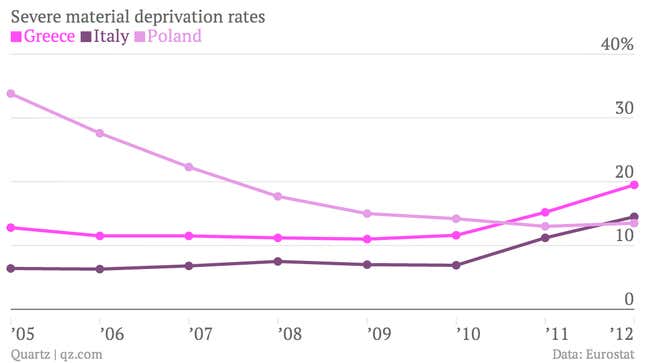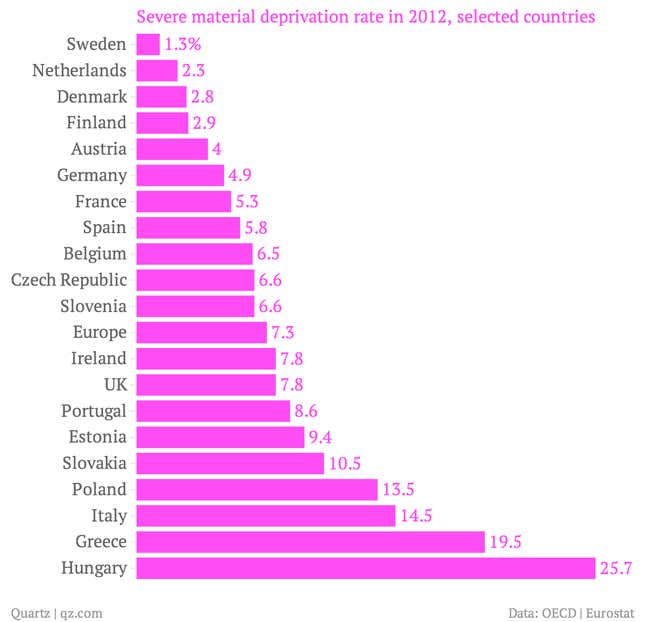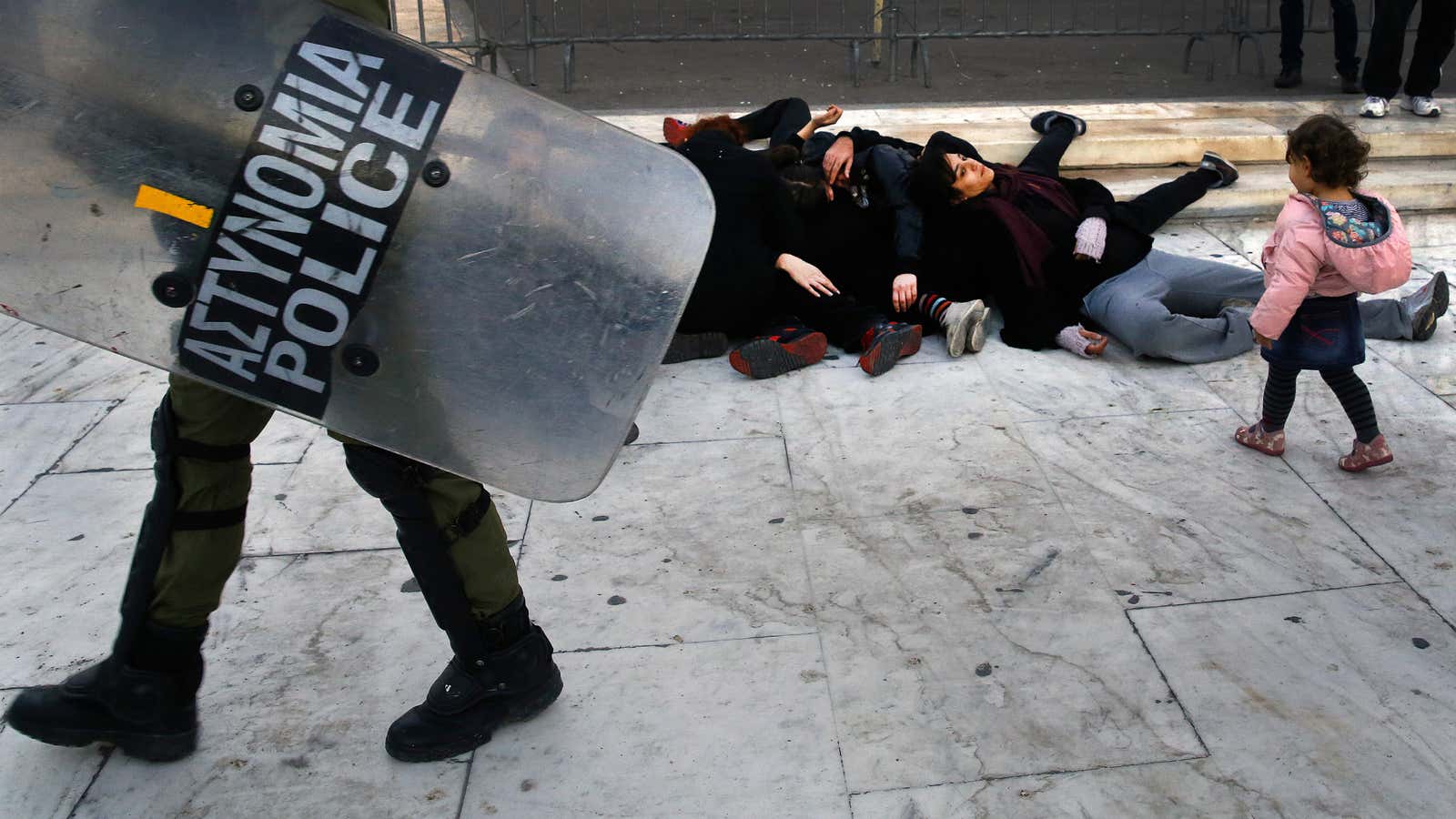Crises have costs.
And this OECD chart—released today—tries to quantify them.
It shows the so-called “severe material deprivation rate” of selected European countries over the last few years. Essentially, this is the percentage of the population unable to afford at least four of the following nine items:
- to pay their rent, mortgage or utility bills
- to keep their home adequately warm
- to face unexpected expenses
- to eat meat or proteins regularly
- to go on holiday
- a television set
- a washing machine
- a car
- a telephone
You can see how quickly deprivation rates have surged in European countries such as Italy and Greece, since those economies came under tremendous strain when the European debt crisis hit in 2010. As a result, deprivation rates in those nations are now above Poland, a much poorer European emerging market.

Now, it’s important to note that, while they’re at the epicenter of the European debt crisis, Italy and Greece aren’t the worst off in Europe. You can see in the chart of select European nations, below, things in Hungary are pretty bad. Of course things in Hungary have been pretty bad for a while, as they have been in Bulgaria and Romania, which at 44% and 29% respectively are the worst off according to the data. (It was published as part of an OECD report on the economic health of Hungary today.)





